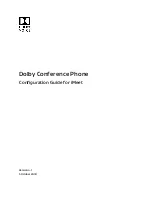
37
14. Safety and Use
SAR (specific absorption rate)
Cell phone radiation level is measured by the Specific Absorption Rate
(SAR). The SAR rating is used to estimate the maximum rate of RF energy
absorption by a user’s head and body when using the phone. In the United
States, the Federal Communications Commission (FCC) sets the
exposure limit for the general public to be an SAR level of 1.6 watts per
kilogram (1.6 W/kg). For typical body-worn operation, a safe distance of
0.39 inches (10 mm) between the user’s body and the back of the phone
should be kept to comply with FCC RF exposure requirements. SAR is
measured for placement of the phone next to the head and on the body.
This phone has been tested to meet national SAR limits and granted FCC
certification with the actual tested results of a Body SAR of 1.39 W/kg and
Head SAR of 0.77 W/kg.”
FCC RF exposure and RF signal
In August 1996, the Federal Communications Commission (FCC) of the
United States with its action in Report and Order FCC 96-326 adopted an
updated safety standard for human exposure to radio frequency
electromagnetic energy emitted by FCC regulated transmitters. Those
guidelines are consistent with the safety standard previously set by both
U.S. and international standards bodies. The design of this phone
complies with the FCC guidelines and these international standards.
This phone has been tested and found to comply with the limits for a Class
B digital device, pursuant to Part 15 of the FCC Rules. These limits are
designed to provide reasonable protection against harmful interference in
a residential installation. It generates, uses and can radiate radio
frequency energy and, if not installed and used i n accordance with the
instructions, may cause harmful interference to radio communications.
However, there is no guarantee that interference will not occur in a
particular installation. If it does cause harmful interference to radio or
television reception, which can be determined by turning the equipment off
and on, the user is encouraged to try to correct the interference by one or
more of the following measures:
-
Reorient or relocate the receiving antenna.
-
Increase the separation between the equipment and receiver.
-
Connect the equipment into an outlet on a circuit different from that to
which the receiver is connected.
-
Consult the dealer or an experienced radio/TV technician for help.
Body-worn operation
This device was tested for typical body-worn operations with the back of
the phone kept 0.39 inches (10mm) between the user’s body and the back
of the phone. To maintain FCC RF exposure compliance requirements,
use only belt-clips, holsters or similar accessories that maintain 0.39
inches separation distance between the user's body and the back of the
Summary of Contents for FOXXD MIRO
Page 1: ...1 ...
















































